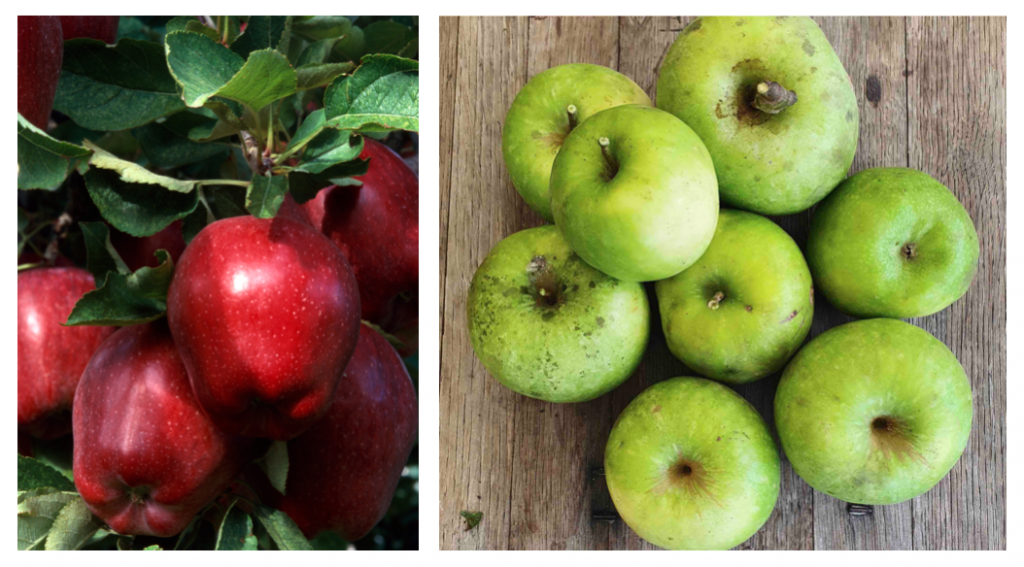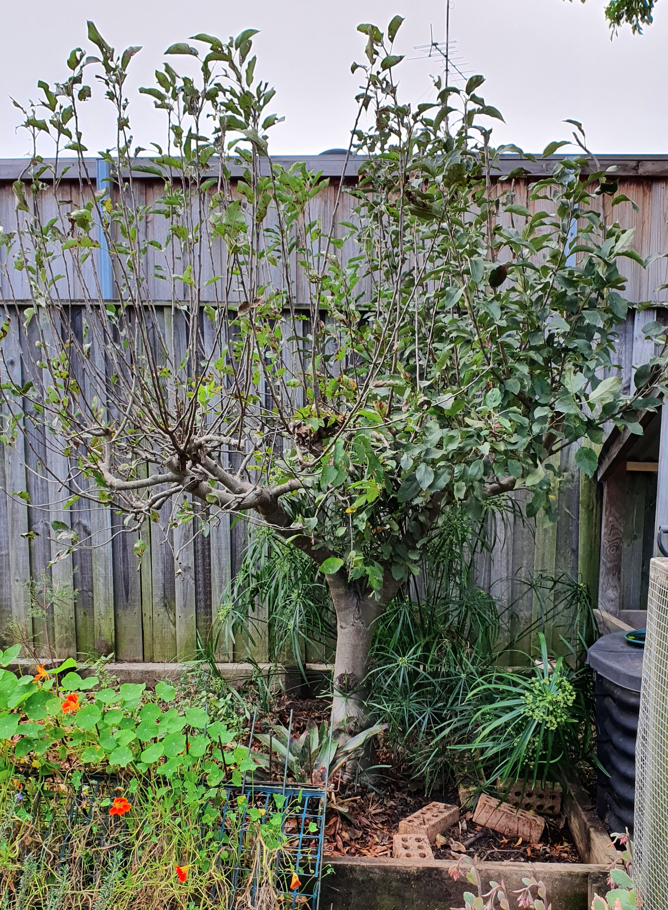Where has all the heritage fruit gone?
It’s reported that there used to be thousands of varieties of apples and other fruits grown historically but now we usually only see about 3 or 4 different varieties stocking the shelves of our supermarkets. Some estimates suggest that we have even lost about 80 percent of apple varieties now.
So why have they disappeared and can (or should) we resurrect them?
Heirloom vegetables
In contrast to heritage fruit, I love the fact that we are now seeing multicoloured tomatoes and carrots at the greengrocer and we have access to online stores that sell heirloom and heritage seeds so we can grow them at home. Heirloom tomatoes have become a colourful Instagram sensation and “Tomato Tuesday” seems to be a thing now. And who can deny that amazing taste when chowing down on some of those home grown toms?
Interestingly, carrots never used to be orange, but were either white or purple. Who’d have thought it? The orange carrot that we usually expect is actually a comparatively recent addition to the veggie world if you look through history and plant breeding records.
So again, why don’t we see the same resurgence with heritage fruit?
What is an heirloom vegetable?
Heirloom vegetables really were nothing fancy in bygone days. They were just the normal produce that people commonly grew before World War 1.
The beauty of heirloom vegetables is that you can collect the seed and replant it next season to get the same crop. This is what we define as growing “true to type” with the next generation. That means you only ever have to buy the seed once, if you collect it each year. Not so with modern hybrid seeds which revert back to a stronger parent variety that may have no resemblance to what you originally grew. Therefore, the grower is forced to purchase hybrid seed every year if they want the same crop each time.
Heritage Apples Varieties

While we might think that we have hit the jackpot if we see a little local greengrocer or a farmers’ market selling perhaps 10 different varieties of heritage apples, it is reported that there may be around 100 apple varieties still grown but not for sale.
Why have heritage fruit and heirloom vegetables disappeared?
Sadly, we are often to blame for the misfortune that we find ourselves in. We are drawn to sweetness and appearance and these 2 things dictate what our shops will sell us. It’s a supply and demand issue. If you won’t buy ugly fruit, then the shops ain’t gonna stock it!
Many heritage apples are small and pimply without a natural sheen, not what we would usually consider attractive. Bigger is not always better. Some are quite tart but make good cooking apples if sweetener is added.
The apple varieties we have now are mostly sweet, table eating varieties. Heritage apples were grown for a different reasons. There were fresh table eating apple varieties (like Cox Orange Pippin), then there were those for baking (like Wolf River) and then some late cropping varieties were kept for storing over longer periods (like Black Oxfords). Some were grown specifically to make cider.
The rise of the supermarket
It was only after World War 2 that we saw the rise of the supermarket, offering convenience to the shopper. Then we saw the rise of commercial farms to maintain volume and consistency for the supermarkets. Supermarkets wanted to offer the same things in all stores across the country, so little family holdings that provided local sales and variety got pushed out of business or swallowed up by the large commercial farms who replaced crops with the same varieties everywhere.
Varieties chosen by the large commercial farms were dictated by disease resistance, hardiness, and durability with transportation. Taste was sadly an underrated quality in the mix.
Importance of diversity

Remember learning about the potato famine in History classes? Well that’s what could potentially happen if we lose the diversity of species with our fruit trees.
Apple trees (and other fruit trees) are largely grafted onto disease resistant root stock. The grafted section is basically a cutting from another plant to ensure uniformity of produce. This is essentially the same tree with the same DNA in every tree sold.
Diversity is important because pesticide resistance could potentially wipe out whole varieties. The more we use chemical pesticides, the more our plants become dependent on them. It’s a bit like antibiotics in humans, over time they become less and less effective at treating the problems and all we need is one super bug (or disease) that pesticides can’t control and then BAM!! – there they all go.
Wiped out like the potatoes in Ireland back in the day.
Growing from Seed
We can grow trees from seed to increase the DNA gene pool. BUT …. There’s always a BUT isn’t there. Anyway, the reason we don’t grow fruit trees from seed is the time that they take to produce fruit. Who’s going to wait 5, 7 or even 10 years to see if you’ve got a tree that produces good fruit.
What do you think?
Have you tasted heritage fruits before?
Do you think they are worth growing now?
I’d love to hear from you. Why not send me an email or DM on Instagram or Facebook and let me know your thoughts.
Want to know how to get the best out of your fruit trees?
Join my VIP Membership and get access to all my masterclasses showing you how to get the best fruit and veggies you’ve ever grown.




 Twitter
Twitter Facebook
Facebook